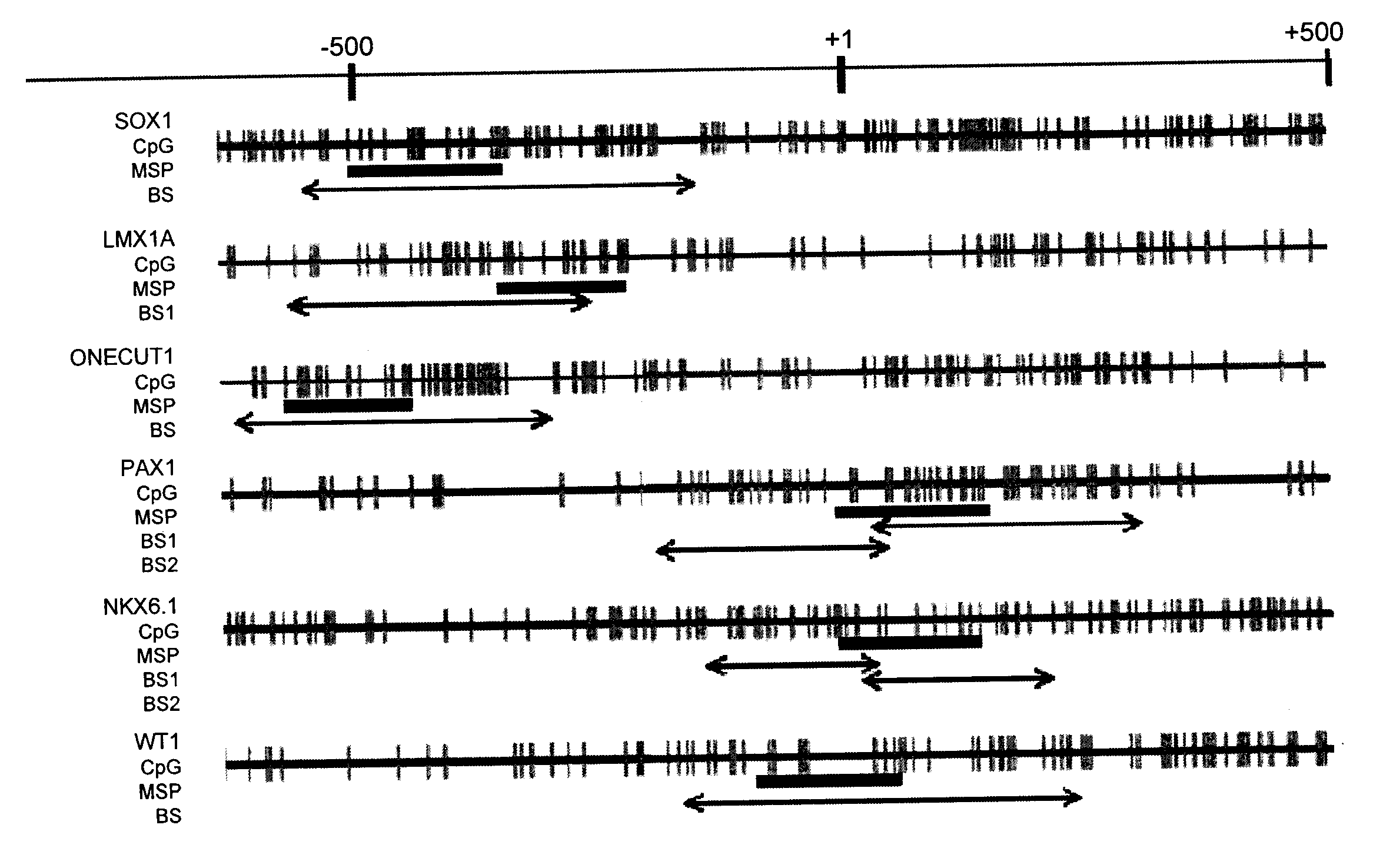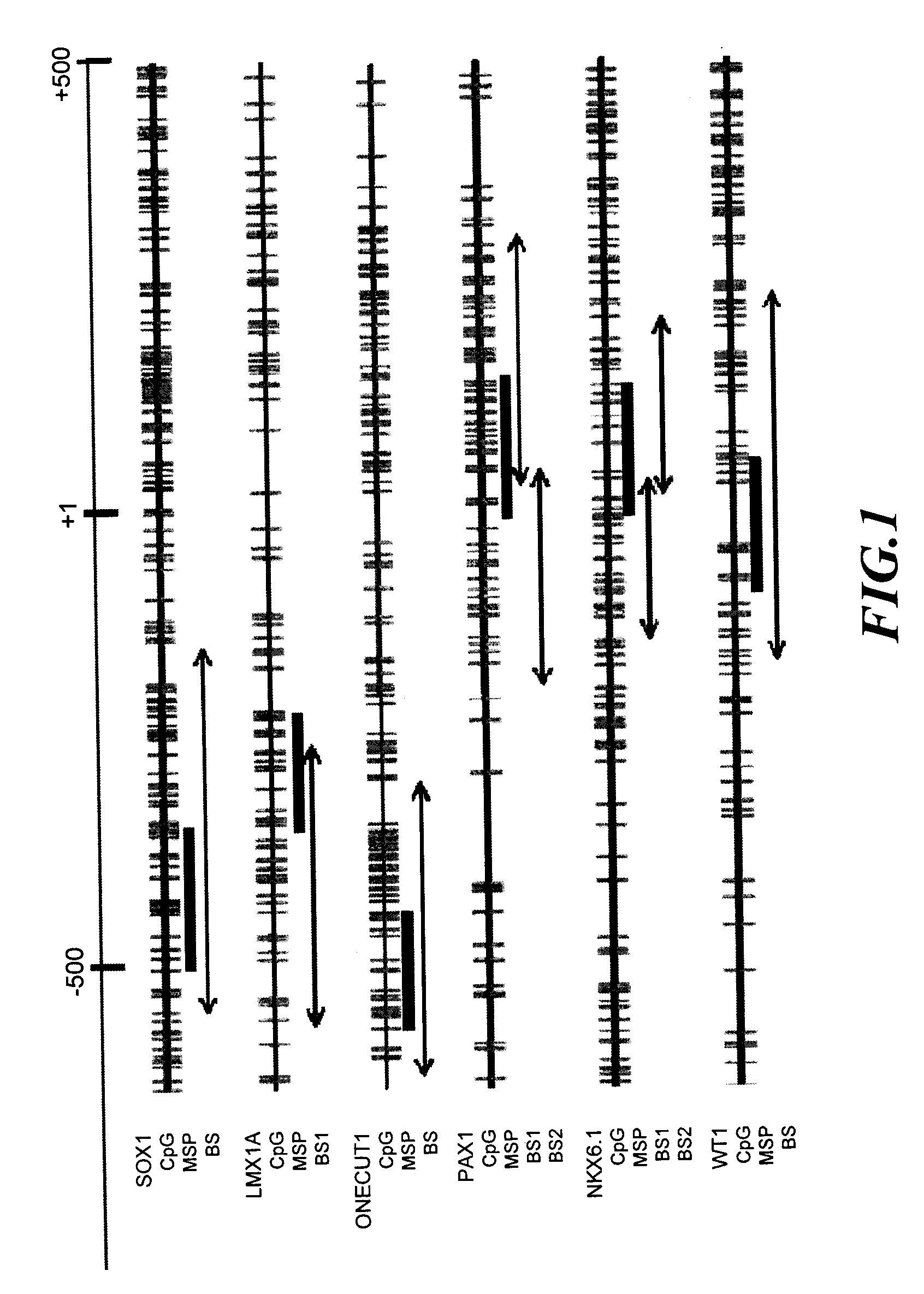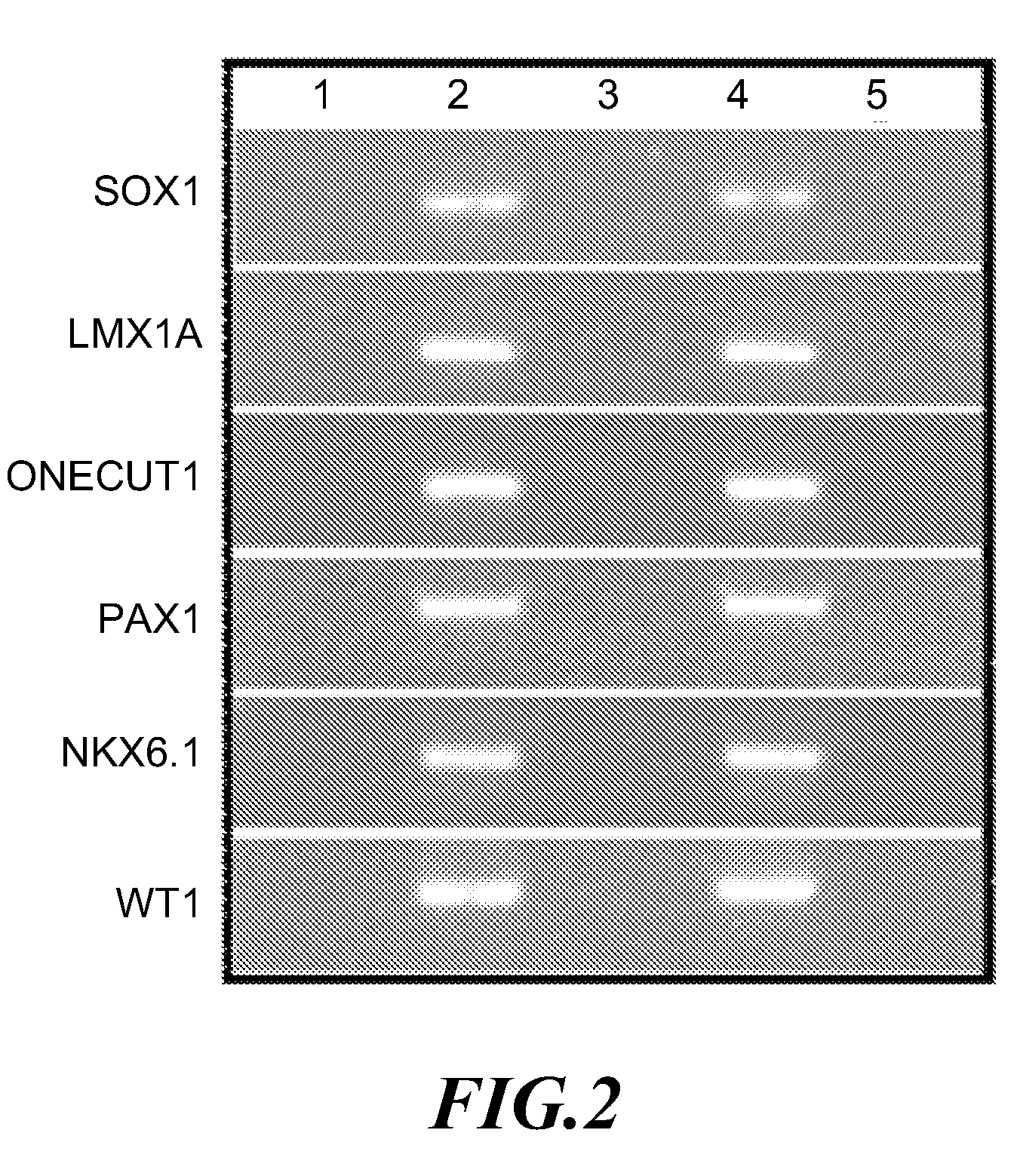Cancer screening method
a screening method and cancer technology, applied in the field of cancer screening methods, can solve the problems of high false negative rate, high cost of manpower, and many undesired properties of pap smear, and achieve the effect of facilitating the diagnosis of other abnormal specimens and accurate screening results
- Summary
- Abstract
- Description
- Claims
- Application Information
AI Technical Summary
Benefits of technology
Problems solved by technology
Method used
Image
Examples
example 1
Materials and Methods
1. Tissue Specimens
[0066]Cervical tissue specimens were obtained from patients with normal uterine cervixes (n=45) and patients with LSIL (n=45), HSIL (n=58), and invasive squamous cell carcinoma (SCC; n=109) of the uterine cervix. The patients were diagnosed, treated, and tissue banked at the Tri-Service General Hospital, Taipei, Taiwan, since 1993. For diagnostic purposes, cytological, histological, and clinical data for all patients were reviewed by a panel of colposcopists, cytologists, and pathologists. All patients were examined and treated using a standard hospital protocol for cervical neoplasia. Controls were recruited from healthy women who underwent routine Pap screening during the same period. Informed consent was obtained from all patients and control subjects. Exclusion criteria included pregnancy, chronic or acute viral infection, a history of cervical neoplasia, skin or genital warts, an immune-compromised state, the presence of other cancers, an...
example 2
Identification of Methylated Genes in Invasive Squamous Cell Carcinoma of the Cervix
[0077]Differential methylation hybridization (DMH) was carried out by means of CpG island microarrays to screen out the highly methylated gene in cervical squamous cell carcinoma (SCC). The result from CpG island microarrays revealed that there were 216 points exhibited differential methylation between cervical cancer tissue specimens and normal cervical smears, of which, after taking off those having overlapped sequences, 26 gene promoter domain CpG islands (promoter CGIs).
[0078]Sequencing and analysis were carried out on these gene promoter and 6 genes were selected. These genes included: SOX1 (SEQ ID No: 1), PAX1 (SEQ ID No: 2), LMX1A (SEQ ID No: 3), NKX6-1 (SEQ ID No: 4), WT1 (SEQ ID No: 5) and ONECUT1 (SEQ ID No: 6). Their detailed information were shown in Table 4. All of these 6 genes are important transcription factors in the development course, of which, SOX1, PAX1, LMX1A, NKX6-1, and WT1 we...
example 3
Association of DNA Methylation and Gene Expression in HeLa Cervical Cancer Cell Line
[0081]In order to confirm whether the expression of cervical cancer methylation indicator gene is regulated through DNA methylation, HeLa cervical cancer cell line was treated with 10 μM of DNA methyltransferase inhibitor, 5′-aza-2′-deoxycytidine (AZC) (Sigma Chemical Co.), for 4 days, following by checking the demethylation by the 6 gene promoters described above by means of methylation-specific PCR (MSP) carried out with MSP primer (U) that could recognize specifically non-methylated gene sequence, as well as with MSP primer (M) that could recognize specifically methylated gene sequence, respectively. Results as shown in FIG. 4A indicated that among non-5′-aza-2′-deoxycytidine (AZC)-treated HeLa cervical cancer cell lines (AZC−), 6 gene promoters exhibited methylated conditions (as shown at column 1 in FIG. 4A), and no non-methylated gene was detected (as shown at column 2 in FIG. 4A). On the other...
PUM
| Property | Measurement | Unit |
|---|---|---|
| volume | aaaaa | aaaaa |
| volume | aaaaa | aaaaa |
| temperature | aaaaa | aaaaa |
Abstract
Description
Claims
Application Information
 Login to View More
Login to View More - R&D
- Intellectual Property
- Life Sciences
- Materials
- Tech Scout
- Unparalleled Data Quality
- Higher Quality Content
- 60% Fewer Hallucinations
Browse by: Latest US Patents, China's latest patents, Technical Efficacy Thesaurus, Application Domain, Technology Topic, Popular Technical Reports.
© 2025 PatSnap. All rights reserved.Legal|Privacy policy|Modern Slavery Act Transparency Statement|Sitemap|About US| Contact US: help@patsnap.com



